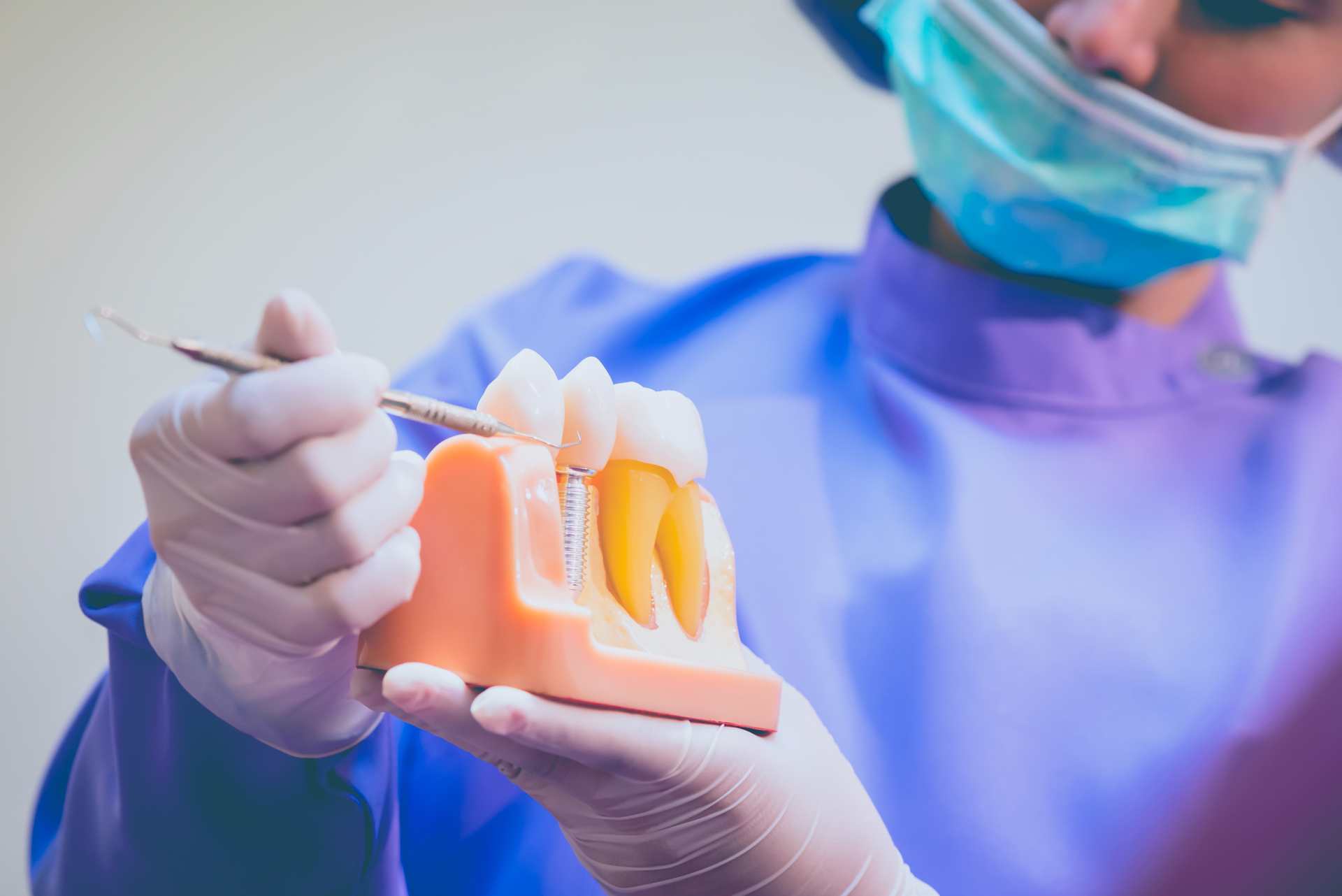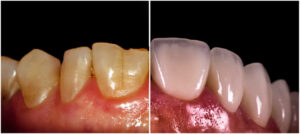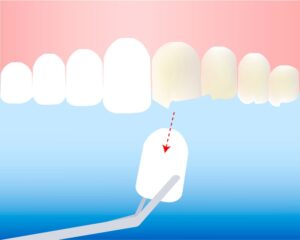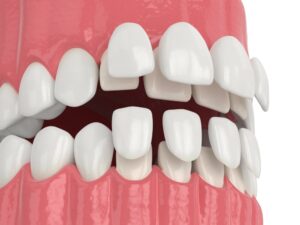Knowing what the dental implant procedure is like allows us to make the right decision if we are considering using them. This procedure is one of the most requested today in the field of reconstructive dentistry. Experience has shown that the dental implant procedure is highly effective and works well for the vast majority of patients. Some specialists assert that dental implants are the current standard of restorative dentistry.
In fact, the statistics show a success rate that is well over 90%, both in the long and short term. Dental implants also turn out to be one of the most successful solutions from both points of view: functional and aesthetic. That is why today in our dental blog, we want to give you all the details you should know about the dental implant procedure. We are sure that it will be very useful information for you.
Miami Perfect Smile: Best Dental Implants in Miami
If you need dental implant treatment in Miami, you have just come to the right place. At Miami Perfect Smile our medical team and the ideal technology are available for you so that your smile looks like the one you always dreamed of. Today we bring you all the information so you can understand what the dental implant procedure is like in our clinic. By following the link that we have just inserted, you can access our data to contact us, schedule your first appointment and thus meet us in person.
If you have dental insurance in the US that covers dental implants, you should know that at Miami Perfect Smile we accept all types of insurance and plans. And something very important: our prices are very reasonable. Our greatest desire is the satisfaction of the patients who put their trust in us. That is why we use the best quality materials and state-of-the-art technology in all procedures.

Making your smile look perfectly aesthetic and natural is our goal. In our facilities, you will receive the careful and specialized treatment that you deserve. Review the opinions of our patients and check their satisfaction with our treatment. Pleased patients are our best letter of introduction.
Details about the dental implant procedure
Undoubtedly one of the procedures preferred by patients today are dental implants. This is because the success rates are getting higher every day. Earlier we gave the figure that more than 90% of treatments are successful, but some sources claim that it is 98%. Another point in its favor is that dental implants work just as well as natural teeth. Not to mention that they favor a very natural and harmonious appearance, so they are very aesthetic.
Dental implants are metal posts similar to screws, whose objective is to serve as a replacement for a lost tooth root. A crown or denture will be placed on the dental implant that will simulate the shape of the natural tooth with the greatest possible detail and realism. Dental implants are installed in the mandibular or maxillary bone through one or more surgeries. The way in which the procedure is performed varies depending on the oral and health conditions of the patient.
When can we resort to the dental implant procedure?
Dental implants are suitable for almost everyone, regardless of gender or age. They are not usually placed in minors except in exceptional cases. But aside from this and some ailments or conditions that we will now look at, implants are suitable for patients of all kinds. Implants are placed in people who have any of the following characteristics:
- One, several, or all teeth are missing.
- When the patient does not want to wear dentures or dental bridges.
- It is necessary to improve the speech affected by edentulism or to recover the normal form of expression.
- As long as there are no diseases that affect the osseointegration of the implant.
- In cases where you want to improve dental aesthetics and better roots are required.
- If there is enough patience regarding the duration of the procedure since it can take several months.

In short, almost anyone with missing teeth or problems that lead to tooth extraction is a candidate for dental implants. Only those suffering from some diseases such as diabetes and others that we will mention below, make it more difficult for the implant to anchor to the bone. In these cases, the implantologist (that is, the dentist specialized in implants) will determine what action to take to make the treatment possible. Otherwise, the dental implant procedure is suitable for everyone.
Stage 1 of the dental implant procedure: evaluation of the patient
In order to determine if a person is a good candidate to receive implants, a comprehensive evaluation is carried out over several steps. These steps are intended to ensure a successful surgery and patient recovery, and subsequent implant osseointegration. Osseointegration is the natural integration of the implant into the bone tissue.
Stage 1 of the dental implant procedure goes through 3 basic steps that, as we said, have a preparatory nature.
a) Comprehensive dental examination
This is an exam that involves dental x-rays, from which 3D digital models of the patient’s mouth are created. From the X-rays, real physical models of the teeth and the mandible or maxilla are also made. This allows dentists to study in-depth, in a particular and highly personalized way, the best places inside the patient’s mouth for the subsequent installation of implants. This type of model facilitates the planning of implant surgery, which in the vast majority of cases translates into the success of the procedure.
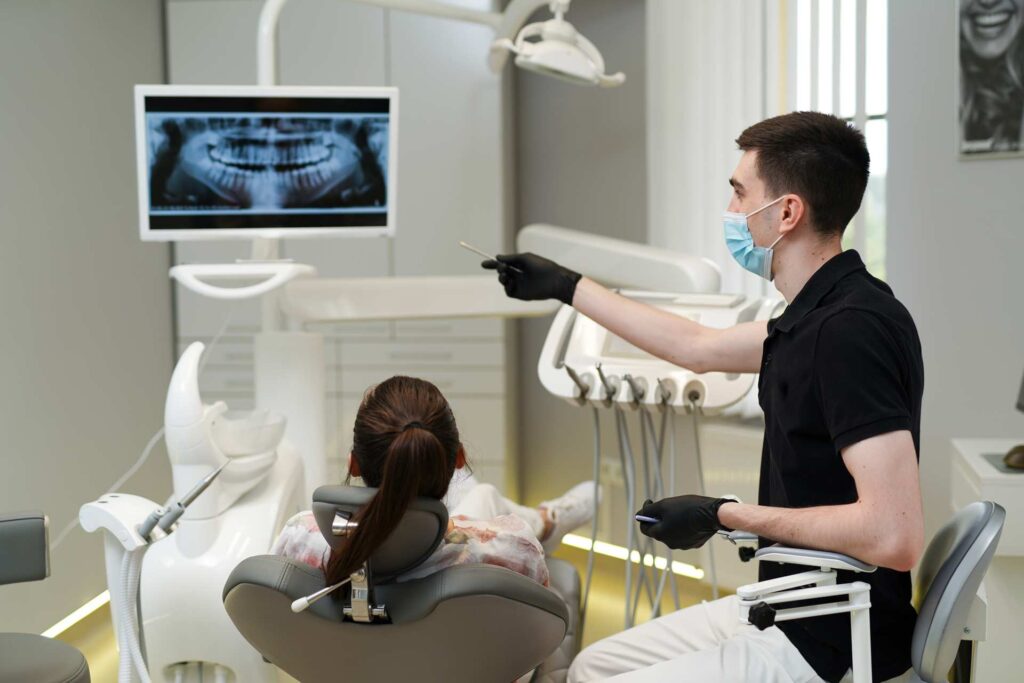
b) Review of pre-existing conditions in the clinical history
It is important that the patient communicates to the dentist any type of illness that he suffers or has suffered. Especially if it is diabetes, periodontal disease, or different types of bone metabolism diseases (osteoporosis, osteomalacia, osteitis fibrocystica, renal osteodystrophy, among others). These are some of the diseases that hinder the osseointegration process, which is the process that allows the implant to be successfully anchored to the bone. Heart conditions, as well as other bone implants (if any) should also be reported to the doctor.
It is also important to communicate if we are taking any type of medication, whether it is a prescription or over-the-counter supplement. Likewise, if you suffer from an allergy to any type of substance or medication, you should be aware of it. No detail is left out. However, the specialists will review the medical history in detail and ask pertinent questions.
Study of health conditions carried out by specialists
As we said above, not all patients have the necessary physical conditions to undergo the dental implant installation procedure immediately. This is why the first thing implantologists do, together with other specialists, is to determine the patient’s oral health status. These will be the previous steps to also understand which types of dental implants are best for each case.
Depending on the physical and oral conditions of the patient, this planning process prior to the installation of dental implants requires the participation of several specialists, in addition to the implantologist. These specialists can be:
- An oral and maxillofacial surgeon: A doctor who specializes in conditions of the mouth, jaw, and face.
- A periodontist: A dentist specializing in the treatment of supporting structures for the teeth, such as the gums and bones.
- A prosthetist: A dentist who designs and installs artificial teeth or dentures.
- An otolaryngologist: A doctor who specializes in the nose, throat, and ear.

The confluence of so many specialists is aimed at evaluating the deep health conditions of patients, to avoid errors. It also aims to determine what medical actions must be taken in order for a patient to be ready for the installation of dental implants. However, it should be noted that it is not always necessary for so many specialists to come to evaluate a patient. The implantologist will request the presence of each of these specialists depending on the conditions detected in the patient.
c) Plan to perform the dental implant procedure
It is the personalized plan that is created especially for each patient, according to their oral conditions. Here the number of teeth to be replaced and how many implants are planned to be placed are taken into account. In addition, the situation and state of the bone in which the implant will be placed is determined, both in terms of quantity and quality. In case the bone is not suitable, it will be necessary to resort to bone grafting as a previous step to implants. The state of health of all existing teeth is also observed, and in particular the state of the teeth or molars that will be adjacent to the future crown that will be placed on the implant is examined.

Stage 2 of the dental implant procedure: previous surgeries
As we have already mentioned, sometimes before installing dental implants, certain basic conditions must be adjusted in the patient, since these will be the keys to the success of the treatment. Basically, for the implants to osseointegrate and anchor to the bone, two conditions are required:
- The first condition is the tooth root space.
- The other condition is that there is enough bone mass in which to place the implant.
Both conditions are not always present, and if they are missing, they require surgery to create them. Let’s see.
a) Dental extraction surgery prior to implants
When a dental implant is going to be placed, the tooth to be replaced is not always absent or totally absent. Sometimes it is necessary to extract the problematic tooth, in order to open the space for the implant. This is where dental extraction surgery prior to implants becomes necessary. Depending on the specifics of the case, the extraction of the tooth can be performed at the same time that the implant will be installed.
In other cases, tooth extraction must be performed at a stage prior to the placement of the implant or implants. Everything will depend on how healthy the tooth to be removed is. If the loss has occurred in the absence of infection and with a healthy bone bed, the tooth can be extracted and the implant placed in the same procedure. However, if there is an infection or there are alterations in the quality and/or quantity of the bone, the tooth must be extracted and wait for some time until the bone bed normalizes.
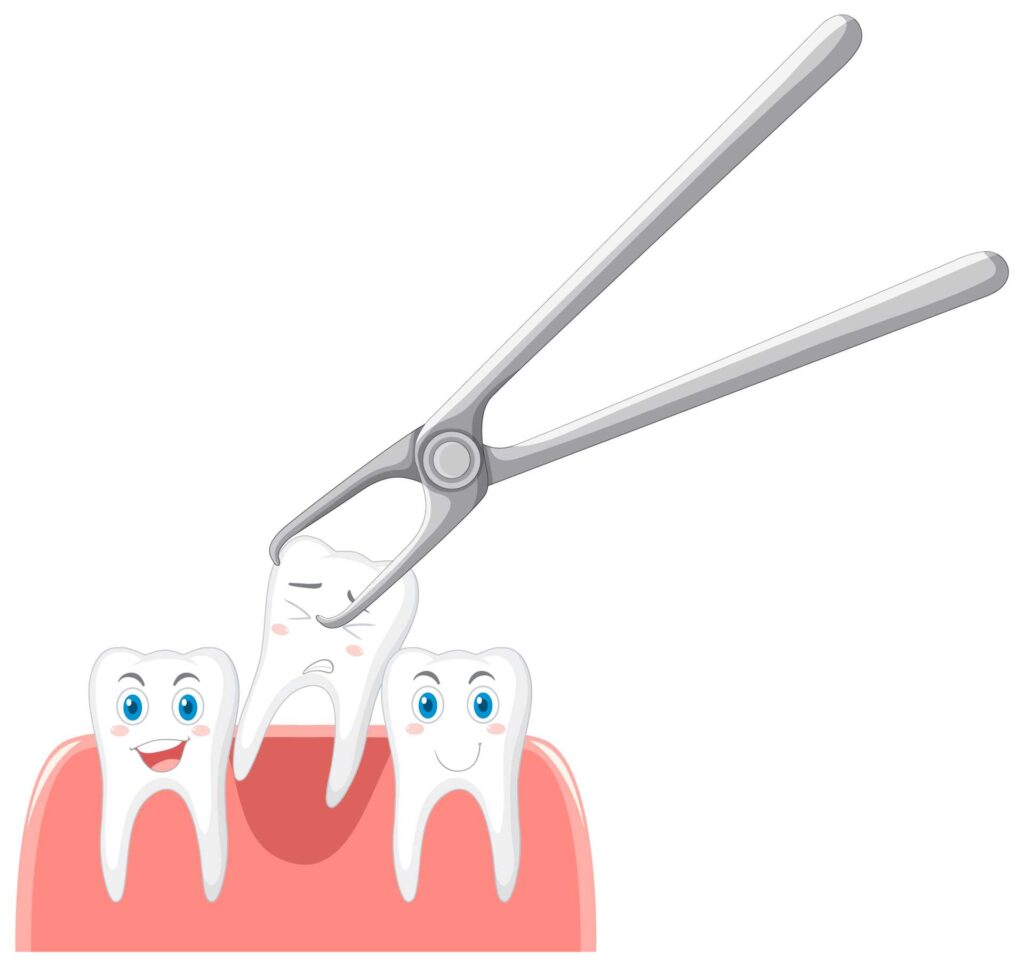
b) Mandibular bone graft surgery prior to implants
This type of surgery is done when the jawbone is not thick enough, or when it is too soft. In these cases, bone grafting is used, with the aim of increasing bone mass and strengthening it at the same time. This is because the constant strong action that will be exerted on the implant in the chewing process will generate a great daily pressure on the bone. In such cases, if the jaw is not strong enough, the implant can fail. There are two types of bone graft, which are classified according to their materials:
- Natural bone graft: In this type of procedure, the bone that comes from a natural source is used. Many times it is bone tissue that is extracted from some part of the patient’s own body. In other cases, it is the bone of some animal that has been prepared for use in humans.
- Synthetic bone graft : This type of bone graft is made of a synthetic material that emulates the characteristics of natural human bone. Its use will help the jaw bone to develop better thanks to the synthetic bone as structure and support.
When the mandibular bone requires very little bone grafting, the latter can be placed at the same time that the dental implant is to be inserted. In this way, the graft and the implant will heal and osseointegrate at the same time. This is a way to save time and shorten treatment. Normally for a bone graft surgery to achieve its goal, it can take several months. What is sought with the simultaneous placement of the bone tissue and the implant is to speed up the procedure.
Stage 3: What is the dental implant procedure like?
Next, we will examine what the dental implant procedure is like, that is, how the dental implant is installed. Actually, placing a dental implant is not very laborious. In fact, it is usually considered a minor surgery, and it is always an outpatient procedure. Mainly after having performed all the relevant previous surgeries, and after having properly prepared the mouth and done the planning, placing an implant is very simple.

Here we will refer to the placement of the types of dental implants that are classified as intraosseous or endosseous, that is, those that are placed inside the bone through an incision in the gum. These types of implants are by far the most widely used today. Surgery to place such a dental implant takes between 10 and 20 minutes. Let’s look at how the procedure of dental implants works.
a) Anesthesia
If you have any doubts about whether dental implants hurt, you should know that they do not, because the first step before installing them, the patient is always anesthetized. The anesthesia numbs all the nerve endings in the area where the work is going to be done. There are 3 options to anesthetize someone who is going to have an implant:
- Local anesthesia: It is placed only in the area in which the work of placing the implant is going to be carried out. Generally this is the most used option. This type of anesthesia allows the patient to be conscious at all times, so it is appropriate for serene patients, who do not become anxious during dental procedures.
- General anesthesia: It is an option for those patients who suffer from anxiety when visiting the dentist. Although the procedure of installing dental implants is not very long, it can be a source of anxiety due to the proximity of the dentist and the intensity of the treatment. With this type of anesthesia, the patient will not be aware of what is happening and anxiety will be avoided, which could also interfere with the procedure.
- Oral or intravenous sedation: This is a newer way to keep calm in the most anxious patients. This method allows the patient to remain conscious or semiconscious during the dental implant procedure. The medication that causes the sedating effect is given to the patient orally (it can be in liquid or pill form) or intravenously. After receiving the sedative medicine, little by little the patient will begin to enter an unconscious state.
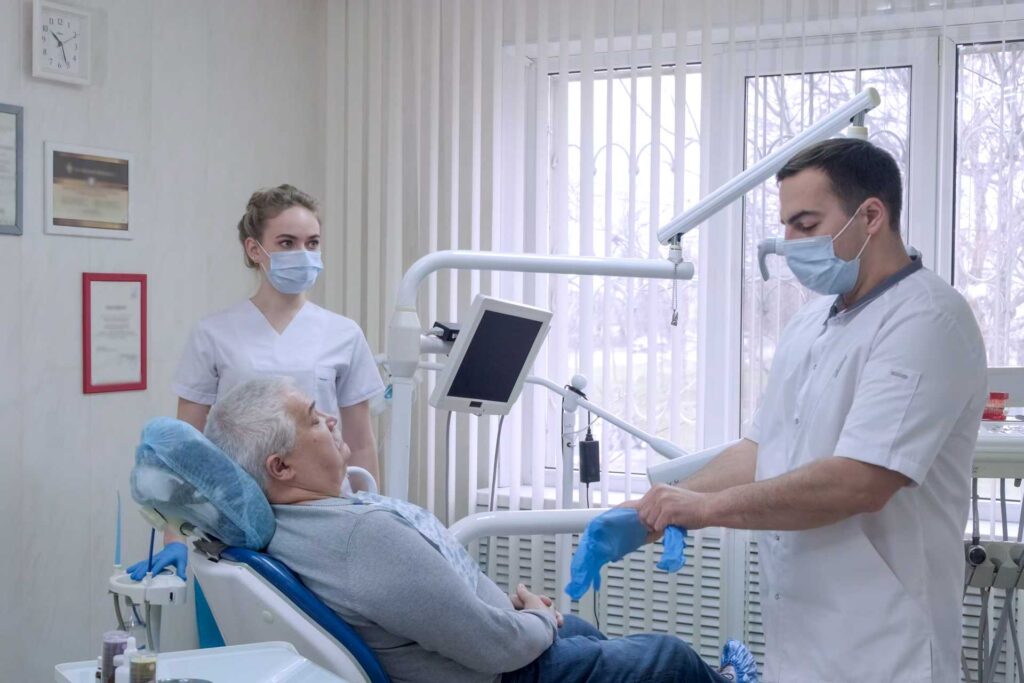
b) Place the implant inside the bone
Once the anesthesia has taken effect, the implant is placed in its location. As we have said, the implant will be placed in the same place as the root of the tooth. This will be the function of an implant: to serve as a root to support the future crown or prosthesis. The steps to place the implant are:
- Make a cut in the gum: The first thing is to open the gum tissue so that the bone is exposed. This is usually achieved by making a small cut, just in the place that was decided during the previous study.
- Drill the bone: At this time the dentist proceeds to drill the bone, just where the implant will be installed. The work done on the bone does not hurt either, but it does require some pressure. This is the most noticeable sensation that the patient can experience, which will not be much or none at all.
- Installation of the dental implant: The area of the implant that will go inside the bone is the one that has the shape of a metal pin. Once the pin has been snug in the bone, it is sometimes necessary to suture the gum to heal the cut that had to be made to uncover the bone. The implant post or fixture will be completely inside the gum, but an empty gap will still be noticeable where the tooth should go.
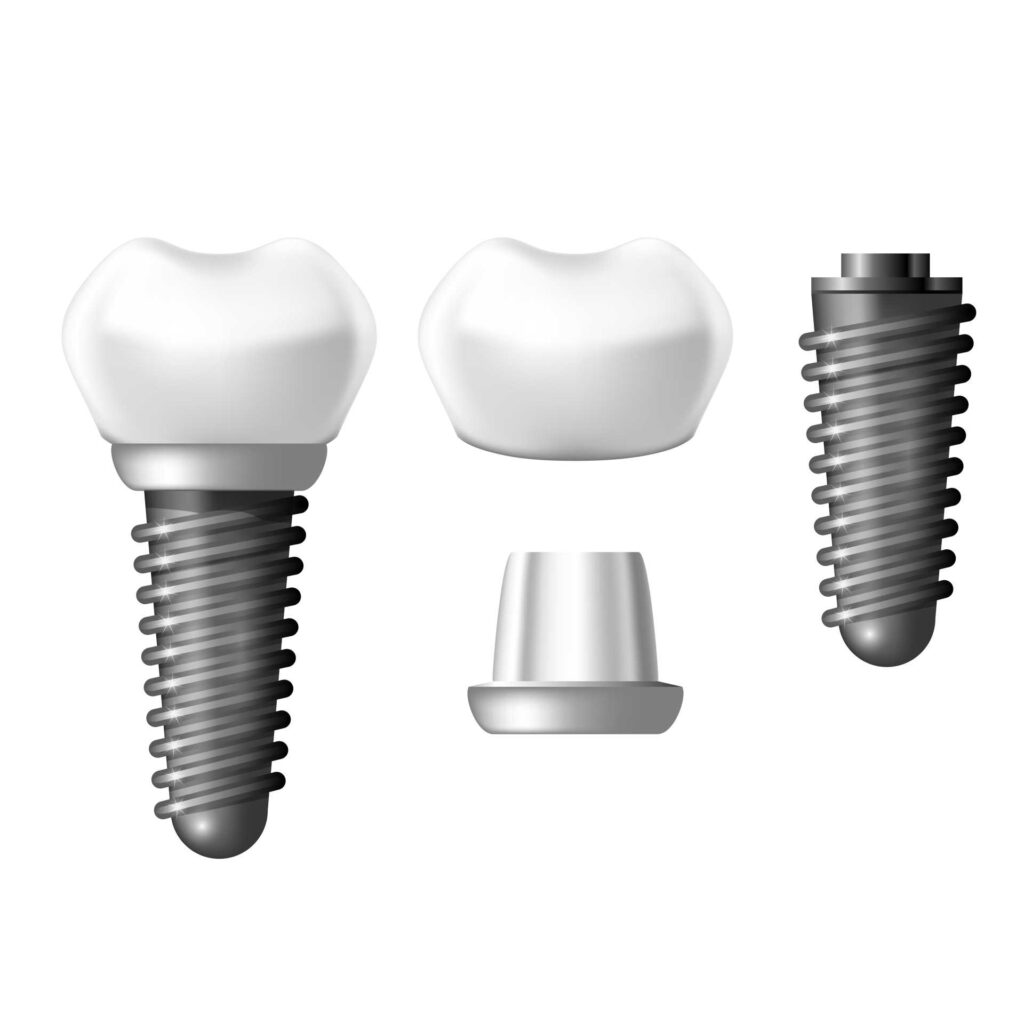
c) Transepithelial abutment connection
The transepithelial abutment is the part of the dental implant that will be in direct contact with the oral environment. It is on this pillar that the future prosthesis will be installed. The transepithelial abutment will be connected to the post, which will be the root of the prosthesis. There are two ways to make the connection between the implant post and the transepithelial abutment.
The abutment can be placed at the same time as the implant is placed
This method is the most commonly performed today because it is more practical and avoids having to perform a second surgery. In this case, both the post and the abutment are placed on the same day. First, the bolt is placed, as we saw above, and immediately afterwards the transepithelial abutment is placed.
In this way, the patient goes home with the two steps completed, and will only have to wait for the successful osseointegration of the implant. Many patients do not like to see the abutments outside the gums, so they prefer to have them installed later (even if it is through another small surgery).
The abutment is placed 3 or 6 months after placing the implant
In this case, the implant will be completely covered by the gum tissue, so you must wait between 3 and 6 months until everything heals correctly. After this time, the patient must return to the clinic to have the transepithelial abutment connected.
This is done under local anesthesia. A small incision is made in the gum to uncover the implant and connect the abutment to it. The abutment will not be covered by the gum, but will be in contact with the oral environment. Then you have to wait 15 days until the gum heals, to go on to fit the definitive prosthesis.
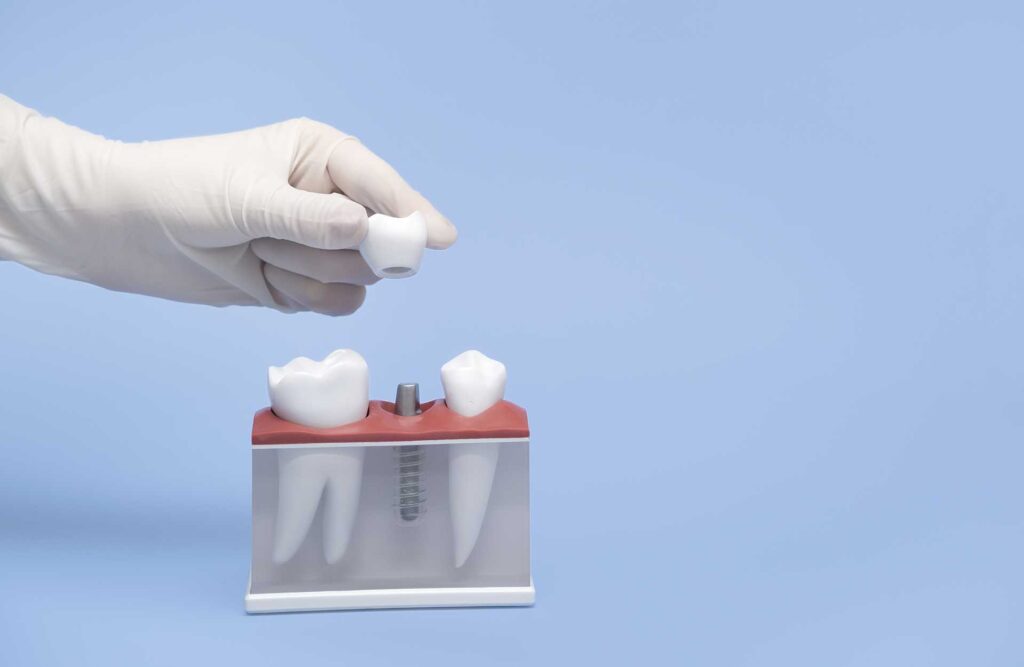
In either case, the patient will still have a hole in place of the tooth. This is why on many occasions some type of partial and temporary denture is placed, to improve appearance and functionality while the necessary time passes to install the definitive prosthesis. This temporary prosthesis can be fixed or removable, but it is not always installed. Only in necessary cases.
d) Healing process and osseointegration of the dental implant
In this stage, the healing process occurs, from which the tissues are replenished and adapted to the new oral elements. In the same way, the osseointegration process occurs, which is extremely important for the implant to be firmly anchored to the bone. During osseointegration, bone grows around the post and bonds to the implant surface. This stage may take a few months. The specific time may be relatively different for each patient. However, the prudential wait is usually 3 to 6 months, for the implant to achieve osseointegration.
When the implant has osseointegrated, it is time to place the abutments (in case they have not been placed together with the pins). Patients who need the abutments must wait another 2 weeks so that the gums around the abutments have time to heal. After that time, we proceed to the installation of dental crowns or definitive prostheses. Patients who have the posts and abutments installed at the same time do not need to wait or have another surgery. They will go directly to place the definitive prostheses.
e) Placement of the dental crown or definitive prosthesis
At last the final stage arrives in which the patient will have their new tooth. The first thing is that new impressions of the mouth will be taken, with the aim of designing the appropriate prostheses for each patient (taking into account the disposition assumed by the implants when osseointegrated). These crowns or artificial teeth have a high aesthetic level and when placed they will look as if they were natural.

There are two prosthetic options at this point. The choice will depend on the taste of each patient:
Removable prosthetics
It is a denture similar to the conventional ones to remove and put on. It can be partial or complete. It consists of perfect white teeth, which are joined by a plastic simulation of pink gums. This denture is based on a metallic structure that is firmly fixed to the implant abutment. This will allow it to never fall off and to be used without fear, both to eat and to talk or laugh. The advantage is that it can be easily removed by the patient for cleaning or necessary repairs.
Fixed prosthetics
In this case, the denture will be fixed by means of cement or screws to the pillars of the implants. The fixed prosthesis cannot be removed by the patient but requires the intervention of the dentist to remove it. This method requires the patient to make frequent visits to the dental clinic, to remove the denture and do a more thorough cleaning. The advantage of this type of prosthesis is its greater sense of fixity. Patients wear their dentures as if they were natural teeth, without the slightest concern that they will shift or fall out.
